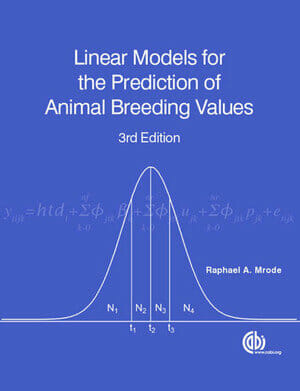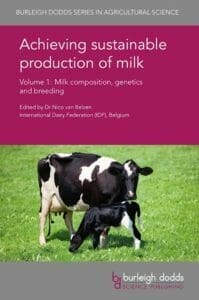Linear Models for the Prediction of Animal Breeding Values
 By R. A. Mrode
By R. A. Mrode
Linear Models for the Prediction of Animal Breeding Values PDF. The prediction of producing desirable traits in offspring such as increased growth rate, or superior meat, milk and wool production is a vital economic tool to the animal scientist. Summarising the latest developments in genomics relating to animal breeding values and design of breeding programmes, this new edition includes models of survival analysis, social interaction and sire and dam models, as well as advancements in the use of SNPs in the computation of genomic breeding values.
Read more: Vitagenes in Avian Biology and Poultry Health
Table of Contents
Table of contents
- I: Preface
- 1: Genetic Evaluation with Different Sources of Records
- 2: Genetic Covariance Between Relatives
- 3: Best Linear Unbiased Prediction of Breeding Value: Univariate Models with One Random Effect
- 4: Best Linear Unbiased Prediction of Breeding Value: Models with Random Environmental Effects
- 5: Best Linear Unbiased Prediction of Breeding Value: Multivariate Animal Models
- 6: Methods to Reduce the Dimension of Multivariate Models
- 7: Maternal Trait Models: Animal and Reduced Animal Models
- 8: Social Interaction Models
- 9: Analysis of Longitudinal Data
- 10: Use of Genetic Markers in Breeding Value Prediction
- 11: Computation of Genomic Breeding Values and Genomic Selection
- 12: Non-additive Animal Models
- 13: Analysis of Ordered Categorical Traits
- 14: Survival Analysis
- 15: Estimation of Genetic Parameters
- 16: Use of Gibbs Sampling in Variance Component Estimation and Breeding Value Prediction
- 17: Solving Linear Equations
- Appendix A: Introduction to Matrix Algebra 2
- Appendix B: Fast Algorithms for Calculating Inbreeding Based on the L Matrix
- Appendix C: Appendix C
- Appendix D: Methods for Obtaining Approximate Reliability for Genetic Evaluations
- Appendix E: Appendix E
- Appendix F: Procedure for Computing Deregressed Breeding Values
- Appendix G: Calculating F, a Matrix of Legendre Polynomials Evaluated at Different Ages or Time Periods
 By R. A. Mrode
By R. A. Mrode













![Ettinger’s Textbook of Veterinary Internal Medicine 9th Edition [PDF+Videos] Ettinger’s Textbook of Veterinary Internal Medicine 9th Edition [True PDF+Videos]](https://www.vet-ebooks.com/wp-content/uploads/2024/10/ettingers-textbook-of-veterinary-internal-medicine-9th-edition-100x70.jpg)

![Textbook of Veterinary Diagnostic Radiology 8th Edition [PDF+Videos+Quizzes] Thrall’s Textbook of Veterinary Diagnostic Radiology, 8th edition PDF](https://www.vet-ebooks.com/wp-content/uploads/2019/09/textbook-of-veterinary-diagnostic-radiology-8th-edition-100x70.jpg)






